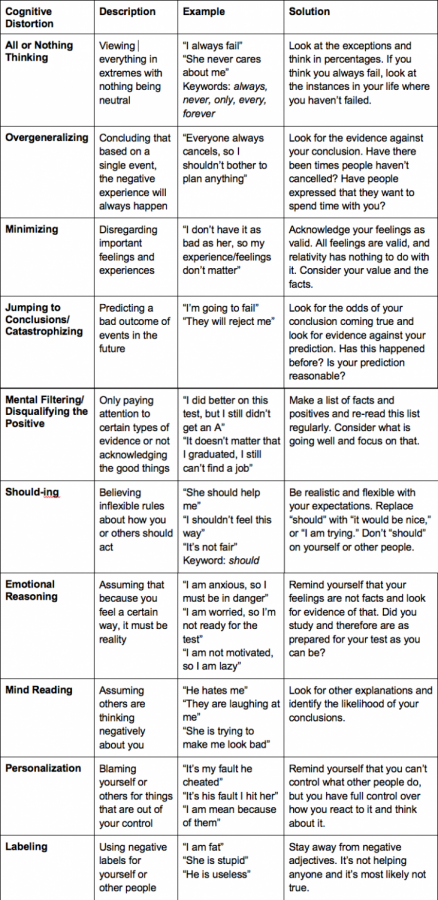Cognitive Behavioral Therapy
Many people struggle to control their thoughts and emotions, specifically those related to anxiety and depression. Many experience undiagnosed, unhealthy thought patterns that can feel small when compared to their peers’ problems; therefore, they don’t think their emotions are valid.
This new series on mental health is meant to offer help to UW-Platteville staff, students and Exponent readers.
According to the American Psychological Association, back in 2013, 41.6% of students were open about saying they had anxiety, 36.4% were open about saying they had depression and 35.8% were open about saying they had relationship problems.
The fact that mental health issues are on the rise is no secret. From 2005 to 2017, the prevalance of mental health issues in college students went up by 63%.
In addition, many people think they don’t struggle with mental health enough to need cognitive behavioral therapy. However, from a diagnosed mental illness to a bad relationship with a parent or friend, daily anxiety or even overthinking, behavioral therapy is a great tool to help with nearly any issues, no matter how small they seem.
Cognitive Behavioral Therapy is a form of psychological treatment that can help with a variety of mental health issues including anxiety, depression, interpersonal issues, substance abuse, eating disorders and more. It aims to change thinking patterns by teaching people how to recognize distortions in their thinking, reevaluate and change behavioral patterns by gaining a better understanding of self, facing fears and learning how to cope with difficult situations.
This article is on thought distortions. People generally trust their brains. The brain is wired to alert the body when things are wrong and provide guidance through life. However, the brain can make faulty connections and lead to negative thinking.
These thoughts are called “cognitive distortions” or “thought distortions.” There are 10 main distortions. For each there is a different way of thinking to help guide the brain away from these unhealthy thoughts on the chart provided. These distortions are very common in today’s society, language and thought processes.
If you find yourself feeling negative emotions or thinking negative thoughts, it’s helpful to go through a five-step process often called the “behavior chain.” The process looks like this:
1) What are you feeling?
2) What events led up to this?
3) What vulnerability factors, such as lack of food or sleep and substance abuse, could be contributing to this?
4) What thoughts are you thinking? Write them down. Do you recognize any thought distortions there?
5) Use the solutions given to logically sift through your thoughts and transform them into a more positive way of looking at your situation.
You are the only one who has control over your thoughts, actions and emotions. As soon as you learn how to control your thoughts and recognize negative thinking patterns, emotional regulation will become much easier.




